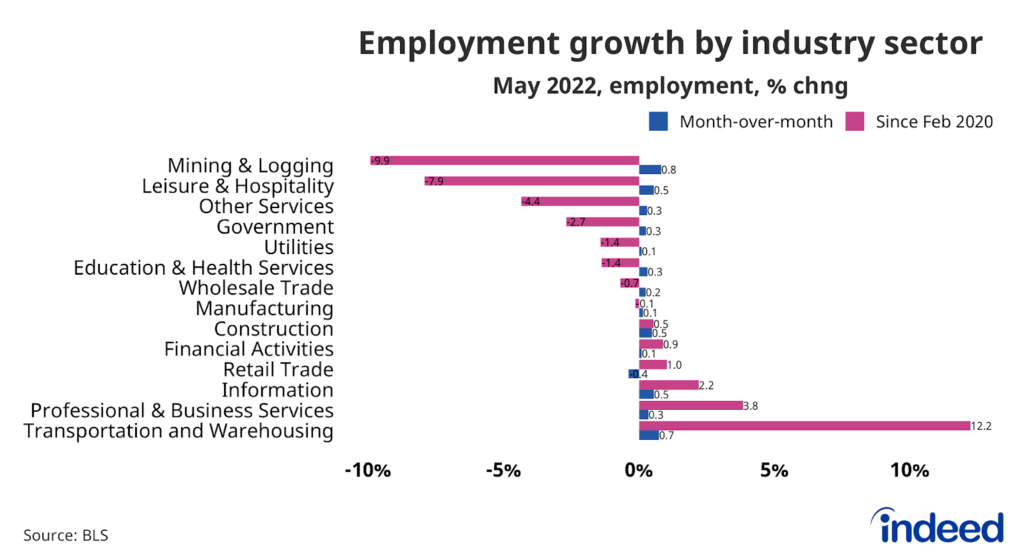Key Points
- Employers are far more likely to offer remote work now than before the pandemic, with 9.4% of postings on Indeed advertised as remote in May 2022 compared with 2.7% in 2019, a 6.7 percentage point increase.
- While every sector is more likely to advertise these options, the spread is substantial, ranging from 0.5% in Beauty & Wellness to 38.6% in Software Development in May 2022.
- The rise of remote postings has been largest in sectors that advertised remote work at higher rates before the pandemic.
The return to worksites may be picking up, but remote options are here to stay. Job seeker interest in remote work continues to be high, with the overall share of searches for such jobs on Indeed still well above pre-pandemic levels. Potential job switchers, particularly women, commonly cite a desire for remote work as a reason they want a new job.
On the employer side, research using data across 20 countries from the Indeed Hiring Lab and the Organization for Economic Co-operation and Development (OECD) found, as measured by remote advertisements, the pandemic-related increase in adoption of remote work has not significantly reversed despite easing of public health restrictions. Other research shows employers increasingly view the rise of remote work as a permanent feature of managing their workforces.
Indeed job postings in the US illustrate the persistence of remote work. In 2019, an average of 2.7% of postings on Indeed used key words and phrases related to remote work such as “working from home,” “telework,” or similar expressions. The share of postings eventually peaked at just under 10% in February 2022 and, as of May, were still at 9.4%.
The overall average masks wide variation in remote job postings across sectors. Almost 39% of Software Development job ads on Indeed in May 2022 contained terms related to remote work or telework. At the other end of the spectrum, only about 0.5% of postings in the Beauty & Wellness sector noted remote work. Not surprisingly, the remote divide is largely between the kinds of jobs that mainly can be done in front of computer screens — coding, writing, and meeting virtually — and jobs that require physical interaction with others — like cutting hair, cleaning teeth, or taking care of children.
Not only is the current remote work distribution uneven across sectors, but so too is the increase. The rise in remote job postings has been strongest in fields that were already advertising remote work at higher rates before the pandemic. This suggests the pandemic induced employers to shift to remote when it was most feasible. And those changes have endured. In the spring of 2020, employers tried out changes in work arrangements that might once have been unthinkable. In many cases, disruptions of worker performance were minimal. In other cases, employees found they liked working from home. Often, these two factors combined to add momentum to the remote trend.
At the same time, the sectors that have experienced the smallest increases are unlikely to see pickups in the future. The nature of those jobs simply makes remote arrangements improbable. Nurses — at least for now — cannot do their work from home.
The rise and persistence of remote work is a major labor market trend. That could potentially have a variety of consequences — from widening the hiring pool to giving employees more flexibility, to even shifting the geographic concentration of industries. Employers less constrained by the locations of their workers, for example, in sectors such as Software Development, may allow employees to live in faraway places that might previously have been considered impractical. We should remember though that while remote work might alter the US labor market, not every job can, or will be, done from home.
Methodology
We identify job postings as open to remote work if the job title or description includes terms like “remote work,” “telecommute,” “work from home,” or similar language, or if the location is explicitly listed as remote. These postings include both permanent and temporarily remote jobs, though employers often don’t specify.
We calculate the remote share of postings on a daily basis. When reporting data on specific months we present the monthly mean of the daily series.




